I'm building a custom SAPUI5 app which consists of a seven diagrams (sap.viz.ui5.controls.VizFrame) in the page's header content (nested inside a sap.suite.ui.commons.ChartContainer) and a grid table (sap.ui.table.Table) in the main content area. The data for the charts and the table is provided by an OData V2 Service and the app is running stand-alone on the latest version (1.81.0).
The problem is the long loading time of the app. It takes between 7 and 20 seconds. Is this common for a "more complex" app? I tried to find the bottleneck but everything looks fine. Many network requests are cached (they take 0ms), however, there is a slight delay in between them and I can't see why. Additionally, there is the following warning in the console, although I'm using the data-sap-async="true" in my index.html file:
[Deprecation] Synchronous XMLHttpRequest on the main thread is deprecated because of its detrimental effects to the end user's experience. For more help, check https://xhr.spec.whatwg.org/. [syncXHRFix-dbg.js:211:15]
Code snippets of my index.html and manifest.json
<!DOCTYPE html>
<html>
<head>
<meta charset="utf-8">
<meta name="viewport" content="width=device-width, initial-scale=1.0">
<title>Loading - Customer Fact Sheet</title>
<script id="sap-ui-bootstrap"
src="resources/sap-ui-core.js"
data-sap-ui-theme="sap_fiori_3"
data-sap-ui-resourceroots='{"com.schott.fiori.customerfactsheet.customerfactsheet-fiori3": "./"}'
data-sap-ui-compatVersion="edge"
data-sap-ui-oninit="module:sap/ui/core/ComponentSupport"
data-sap-ui-async="true"
data-sap-ui-frameOptions="trusted">
</script>
<link href="https://www.schott.com/static/assets/gfx/favicon/SCHOTT_16.png" rel="shortcut icon" type="image/png" />
</head>
<body class="sapUiBody">
<div data-sap-ui-component data-name="com.schott.fiori.customerfactsheet.customerfactsheet-fiori3" data-id="container" data-settings='{"id" : "customerfactsheet-fiori3"}'></div>
</body>
</html>
{
"_version": "1.12.0",
"sap.app": {
"id": "com.schott.fiori.customerfactsheet.customerfactsheet-fiori3",
"type": "application",
"i18n": "i18n/i18n.properties",
"applicationVersion": {
"version": "1.0.0"
},
"title": "{{appTitle}}",
"description": "{{appDescription}}",
"sourceTemplate": {
"id": "servicecatalog.connectivityComponentForManifest",
"version": "0.0.0"
},
"dataSources": {
"YODATA_SD_CFS_MATRIX_SRV": {
"uri": "/sap/opu/odata/sap/YODATA_SD_CFS_MATRIX_SRV/",
"type": "OData",
"settings": {
"localUri": "localService/metadata.xml"
}
}
}
},
"sap.ui": {
"technology": "UI5",
"icons": {
"icon": "",
"favIcon": "",
"phone": "",
"phone@2": "",
"tablet": "",
"tablet@2": ""
},
"deviceTypes": {
"desktop": true,
"tablet": true,
"phone": true
}
},
"sap.ui5": {
"flexEnabled": false,
"rootView": {
"viewName": "com.schott.fiori.customerfactsheet.customerfactsheet-fiori3.view.Main",
"type": "XML",
"async": true,
"id": "Main"
},
"dependencies": {
"minUI5Version": "1.65.6",
"libs": {
"sap.ui.layout": {},
"sap.ui.core": {},
"sap.m": {}
}
},
"contentDensities": {
"compact": true,
"cozy": false
},
"models": {
"i18n": {
"type": "sap.ui.model.resource.ResourceModel",
"settings": {
"bundleName": "com.schott.fiori.customerfactsheet.customerfactsheet-fiori3.i18n.i18n"
}
},
"": {
"type": "sap.ui.model.odata.v2.ODataModel",
"settings": {
"defaultOperationMode": "Client",
"defaultBindingMode": "OneWay",
"defaultCountMode": "Request"
},
"dataSource": "YODATA_SD_CFS_MATRIX_SRV",
"preload": true
}
},
"resources": {
"css": [{
"uri": "css/style.css"
}]
},
"routing": {
"config": {
"routerClass": "sap.m.routing.Router",
"viewType": "XML",
"async": true,
"viewPath": "com.schott.fiori.customerfactsheet.customerfactsheet-fiori3.view",
"controlAggregation": "pages",
"controlId": "app",
"clearControlAggregation": false
},
"routes": [{
"name": "RouteMain",
"pattern": "RouteMain",
"target": ["TargetMain"]
}],
"targets": {
"TargetMain": {
"viewType": "XML",
"transition": "slide",
"clearControlAggregation": false,
"viewId": "Main",
"viewName": "Main"
}
}
}
},
"sap.platform.hcp": {
"uri": "webapp",
"_version": "1.1.0"
}
}



